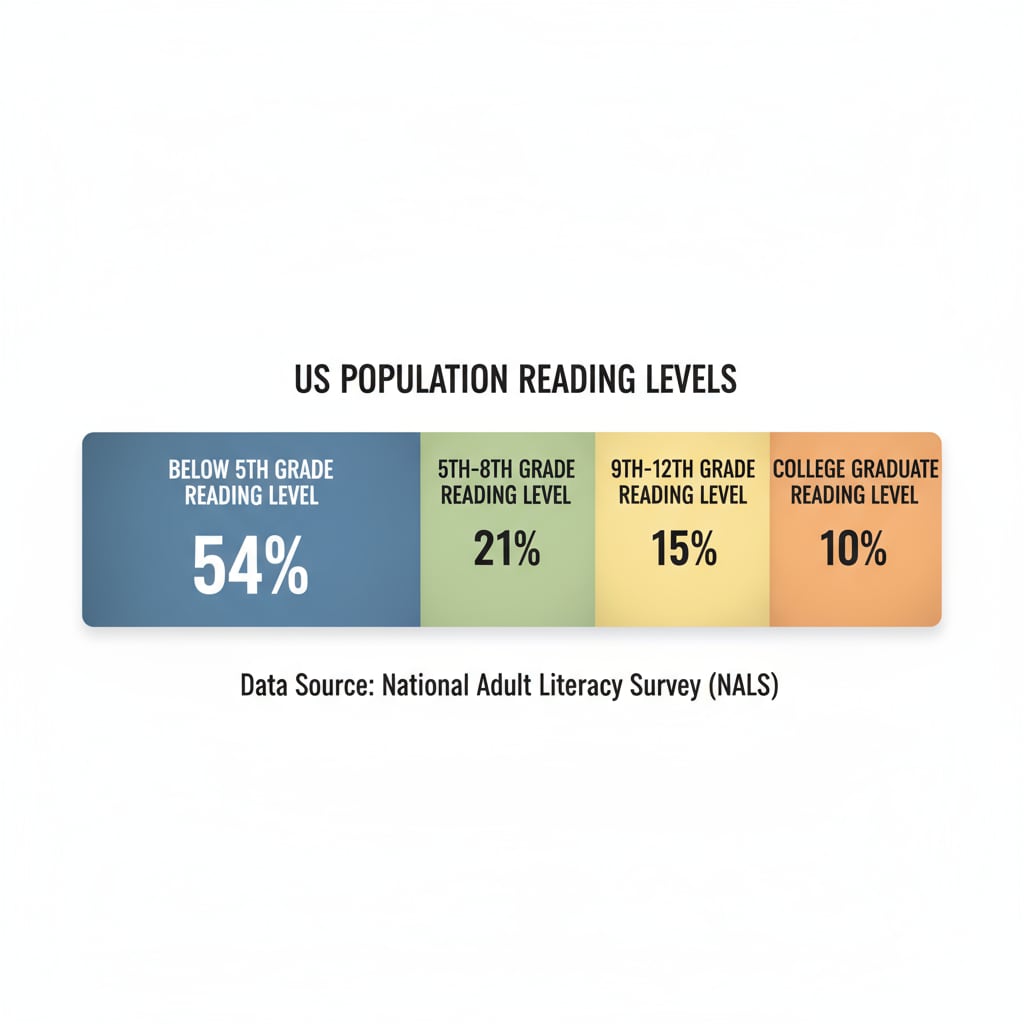The issue of functional illiteracy, reading comprehension, and education crisis in the United States has drawn increasing attention. A staggering fact is that 54% of the US population has a reading level below the fifth grade. This high rate of functional illiteracy poses significant threats to the nation’s development.

The Alarming Reality of Functional Illiteracy
Functional illiteracy refers to the inability to use reading, writing, and computational skills effectively in daily life and at work (as defined by educational experts). In the US, this has manifested in a large portion of the population struggling with basic literacy tasks. For example, many adults may have difficulty understanding written instructions on job applications, medical prescriptions, or financial documents.
Functional Illiteracy on Wikipedia
Impact on Social and Economic Development
This high level of functional illiteracy has far – reaching consequences. Economically, it can limit job opportunities for individuals. Employers often require a certain level of reading and comprehension skills for most positions. Those with low literacy levels may be restricted to low – paying, unskilled jobs. Socially, it can lead to a less informed citizenry. People with poor reading skills may have difficulty accessing information about public policies, health issues, and community events.

In addition, it can widen the gap between the rich and the poor. As the economy becomes more knowledge – based, those with better literacy skills are more likely to succeed, while the functionally illiterate are left behind.
The Root Causes: Inadequate Education Funding and Ideological Interference
One of the main reasons for this high rate of functional illiteracy is the insufficient education funding in many areas. Schools in disadvantaged neighborhoods often lack resources such as up – to – date textbooks, qualified teachers, and proper learning facilities. Another factor is the ideological interference in education. Sometimes, political or ideological agendas may influence what is taught in schools, diverting attention from fundamental literacy skills.
In conclusion, the problem of functional illiteracy, reading comprehension, and the associated education crisis in the US demands immediate attention. Addressing this issue requires a combination of increased education funding, improved teacher training, and a focus on fundamental literacy skills. Only by taking these steps can the US hope to reduce the rate of functional illiteracy and ensure a more literate and prosperous society.
Readability guidance: Short paragraphs and lists are used to summarize key points. Each H2 section provides relevant details. Passive voice and long sentences are kept to a minimum, and transition words are added throughout the text for better flow.


